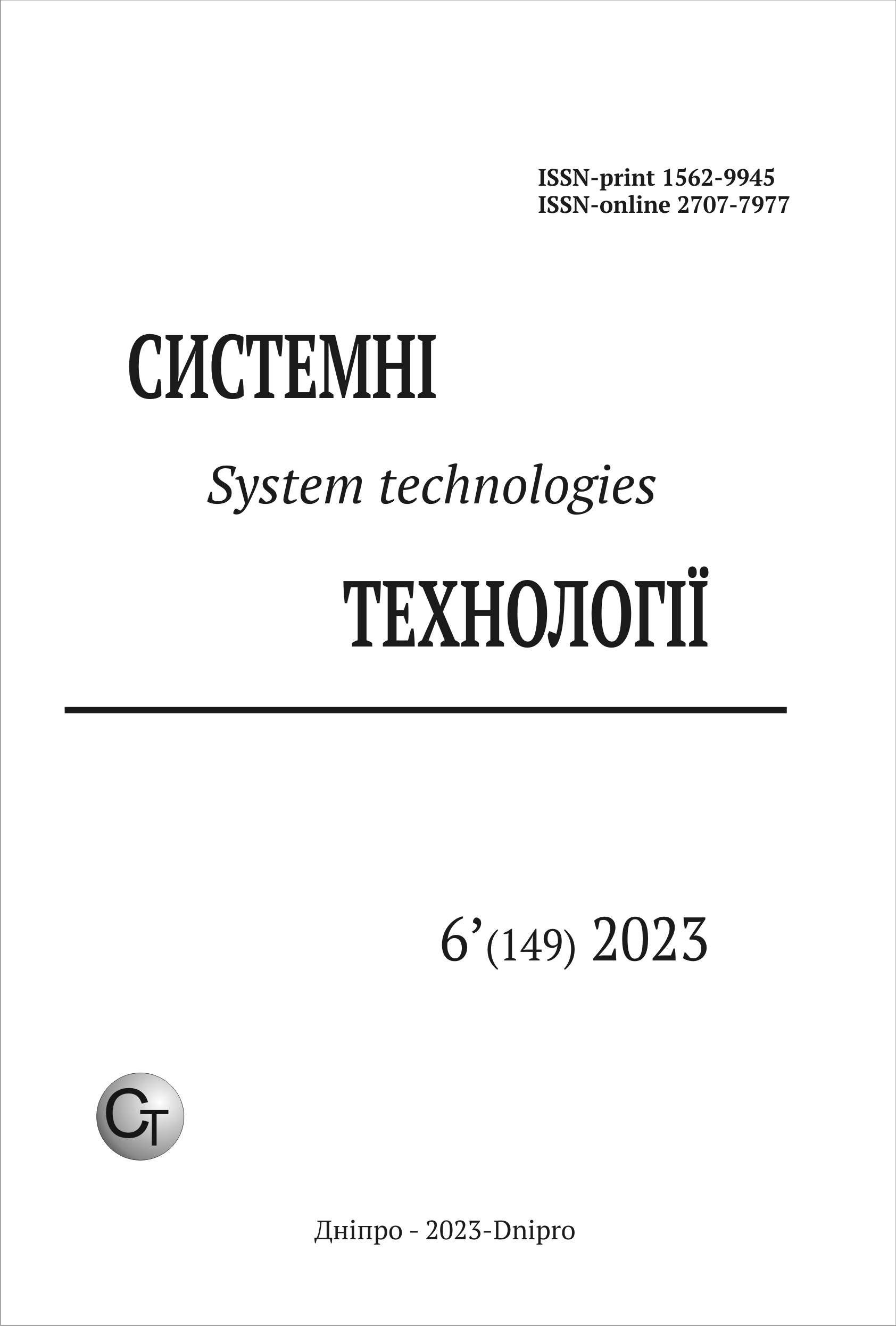МАТЕМАТИЧНІ МОДЕЛІ ТА МЕТОДИ РОЗМІЩЕННЯ ОБ’ЄКТІВ І ЗОНУВАННЯ ТЕРИТОРІЙ В СИСТЕМАХ ЕКСТРЕНОЇ ЛОГІСТИКИ
DOI:
https://doi.org/10.34185/1562-9945-6-149-2023-09Ключові слова:
екстрена логістика, мультиплексне розбиття множин, багатократне кульове покриття, моделювання, оптимізація.Анотація
Представлені математичні моделі процесів розподілу матеріальних ресурсів, що пов’язано з організацією запобіжних заходів у разі загрози або виникнення надзвичайних ситуацій техногенного характеру. Розглянуто: задачі оптимального зо-нування територій із закріпленням зон за об'єктами соціального призначення для на-дання послуг з можливістю перекриття зон на випадок, коли найближчий центр не має можливості у повному обсязі надавати послуги; оптимальне розміщення певної кількості нових центрів систем екстреної логістики з одночасним перерозподілом на-вантаження на всі їх структурні елементи; вибір місць розташування структурних підрозділів на базі існуючих об’єктів. Критерії оптимальності передбачають мінімізацію або часу надання послуги найвіддаленішому об’єкту на заданій території, або сумарної відстані до найближчих центрів від споживачів, які щільно розподілені на заданій території. Враховані також організаційні витрати, пов’язані із облаштуван-ням нових центрів. Математичні моделі запропоновано у вигляді неперервних задач оптимального мультиплексного розбиття множин з лінійним або мінімаксним функціоналом якості. Останній забезпечує таке розміщення центрів, що задає опти-мальне багатократне покриття території (з мінімальним радіусом кратного покриття). Методи розв’язання сформульованих задач розроблено з використанням ЛП-релаксації лінійних задач з булевими змінними, теорії двоїстості для зведення отриманих задач нескінченновимірного програмування до задач умовної оптимізації негладкої функції декількох змінних, сучасних методів недиференційованої оптимізації. Програмний додаток, розроблений для зонування і розміщення об’єктів в системах екстреної логістики на основі моделей та методів розв’язання неперервних задач оптимального мультиплексного розбиття і покриття множин із залученням ГІС-технологій, дозволяє планувати завчасні соціально-економічні та організаційно-технічні заходи, спрямовані на підвищення безпеки у ви-падках техногенних ситуацій.
Посилання
Koriashkina, L.S., Dziuba, S.V. (2023). Pererozpodil navantazhennia v systemi ekstrenoi lohistyky za rakhunok optymalnoho rozmishchennia yii novykh pidrozdiliv. International sci-entific-practical conference “Modern trends and prospects for the development of science, education and society”: conference proceedings (Aarhus, Denmark, August 10, 2023). Aarhus, Denmark: Scholarly Publisher ICSSH, 2023. – С. 42 – 43.
Hezam, I.M., Nayeem, Mk., Lee, G.M. (2021). A Systematic Literature Review on Mathematical Models of Humanitarian Logistics. Symmetry; 13(1):11. https://doi.org/10.3390/sym13010011
Seraji H., Tavakkoli-Moghaddam R., Asian S., Kaur H. (2022). An integrative location-allocation model for humanitarian logistics with distributive injustice and dissatisfaction un-der uncertainty. Annals of Operations Research, Springer, vol. 319(1), p. 211-257, December. DOI: 10.1007/s10479-021-04003-5
Weng, X., Duan, S., Zhang, J., Fan, H. (2024). A Material Allocation Model for Public Health Emergency under a Multimodal Transportation Network by Considering the Demand Priority and Psychological Pain. Mathematics, 12(3):489. https://doi.org/10.3390/math12030489
Tlili, T., Abidi, S., Krichen, S. (2018). A mathematical model for efficient emergency transportation in a disaster situation. American Journal of Emergency Medicine, 36, 1585–1590. DOI:10.1016/j.ajem.2018.01.039
Safaei, A.S., Farsad, S., Paydar, M.M. (2018). Emergency logistics planning under supply risk and demand uncertainty. Oper Res Int J. https://doi.org/10.1007/s12351-018-0376-3
Ehsani, B., Karimi, H., Bakhshi, A., Aghsami, A., Rabbani, M. (2023). Designing humani-tarian logistics network for managing epidemic outbreaks in disasters using Internet-of-Things. A case study. Computers and Industrial Engineering. 175:C. Online publication date: 1-Jan-2023. https://doi.org/10.1016/j.cie.2022.108821
Koriashkina, L., Us, S., Odnovol, M., Stanina, O., Dziuba, S.(2024). Two-stage problems of optimal location and distribution of the humanitarian logistics system’s structural subdivi-sions. Naukovyi visnyk Natsionalnoho hirnychoho universytetu, 1.
Dziuba S., Koriashkina, L., Stanina, O., Lubenets, D. (2023). Mathematical models of optimization problems of partially two-stage population evacuation with territory segmentation. Information Technol-ogy: Computer Science, Software Engineering and Cyber Security, 3, 13–21, doi: https://doi.org/10.32782/IT/2023-3-2
Mallozzi, L., Puerto, J., Rodríguez-Madrena, M. (2019). On Location-Allocation Prob-lems for Dimensional Facilities. Journal of Optimization Theory and Applications, Springer, vol. 182(2): 730-767, August. DOI: 10.1007/s10957-018-01470-y
Mohamadi, A., Yaghoubi, S., Pishvaee, M.S. (2019) Fuzzy multi-objective stochastic programming model for diaster relief logistics considering telecommunication infrastructures: a case study. Oper Res Int J, 19(1): 59-99
Koriashkina, L., Sazonova, M., Odnovol, M. (2023). Algorithms of territorial segmenta-tion for a facility network with overlapping service zones. Information Technology: Computer Science, Software Engineering and Cyber Security, 2, 12–25. doi: https://doi.org/10.32782/IT/2023-2-2
Dziuba, S., Bulat, A., Koriashkina, L., Blyuss, B. (2023). Discrete-Continuous Model of the Optimal Location Problem for the Emergency Logistics System. Available at SSRN: http://dx.doi.org/10.2139/ssrn.4401341
Завантаження
Опубліковано
Номер
Розділ
Ліцензія
Авторське право (c) 2024 Системні технології

Ця робота ліцензується відповідно до ліцензії Creative Commons Attribution 4.0 International License.















